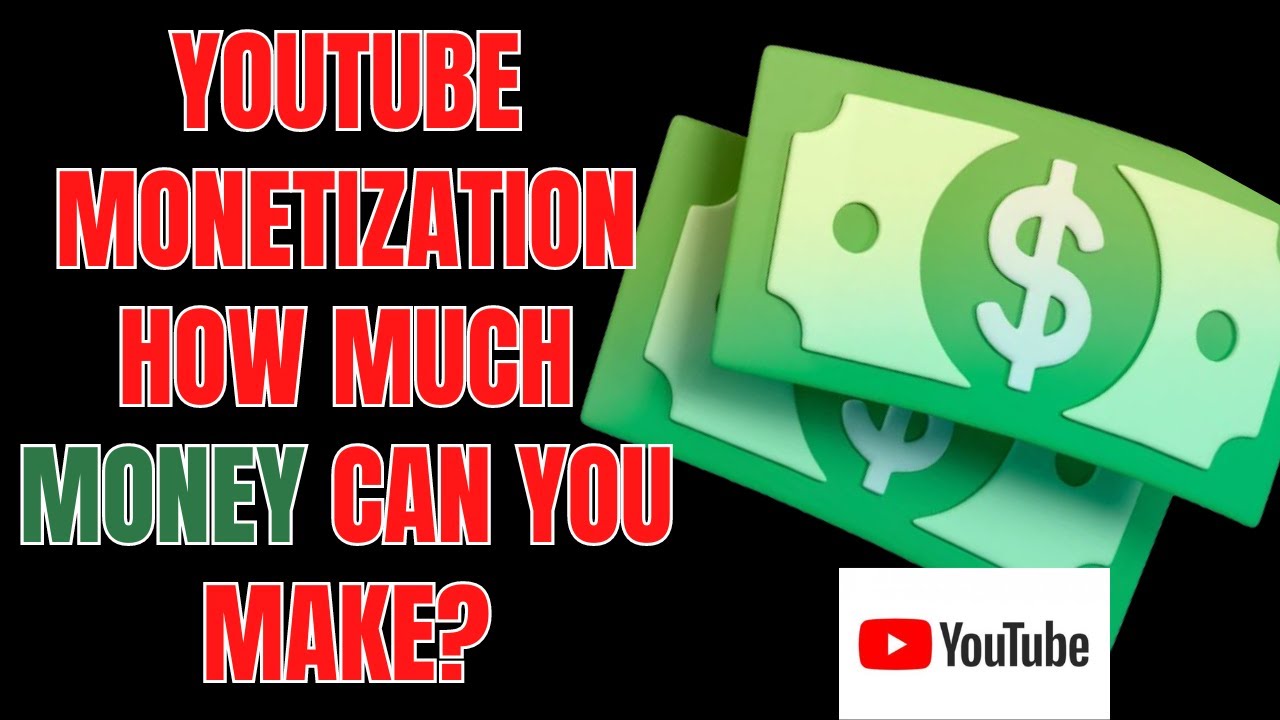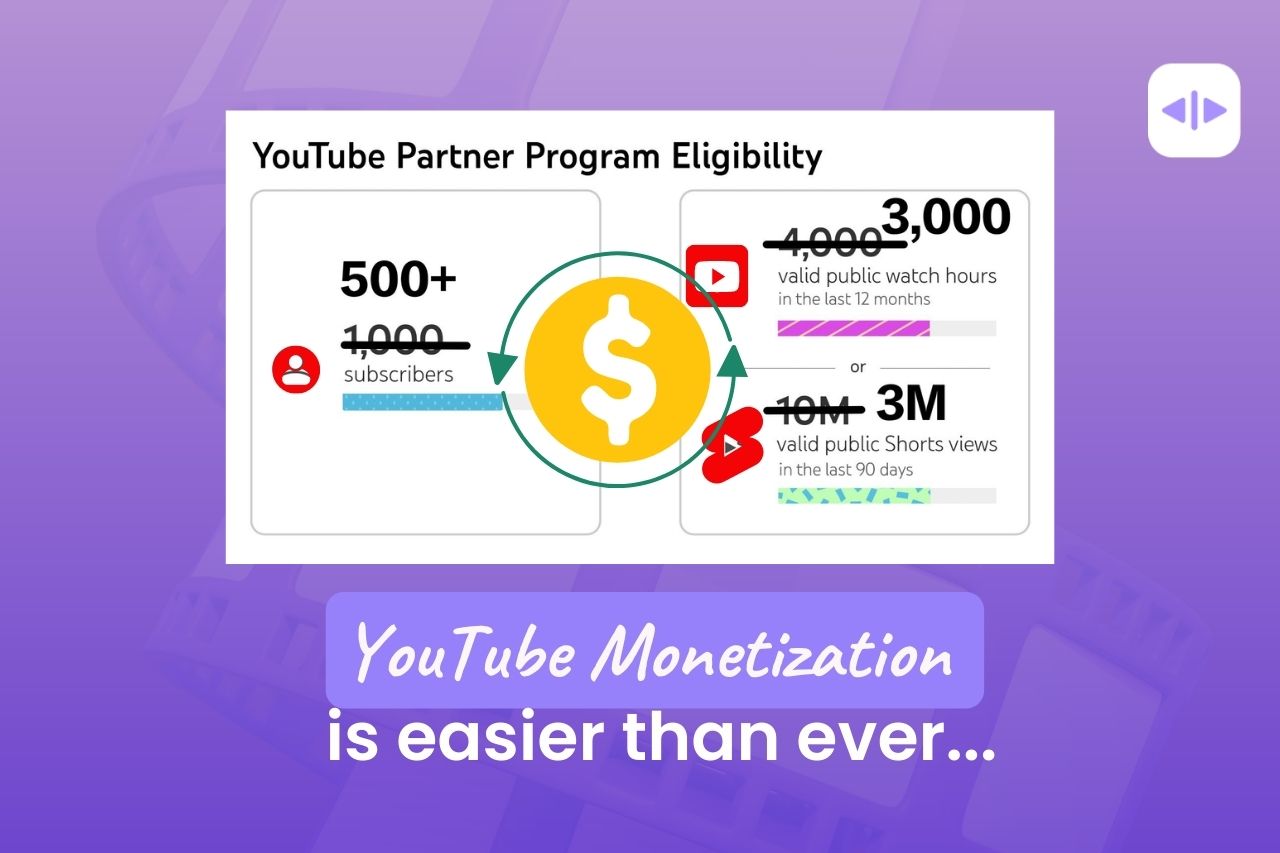YouTube has become a fantastic platform for creators to express themselves and connect with audiences worldwide. However, earning money through YouTube isn’t as straightforward as it may seem. With millions of videos getting uploaded every day, understanding how
How YouTube Calculates Earnings from Views

Understanding how YouTube calculates earnings from views is essential for anyone looking to make money on the platform. The process may seem complex, but breaking it down can help. Here’s what you need to know:
1. Ad Revenue Basics
YouTube primarily monetizes content through advertising. When you enable monetization on your channel, ads appear on your videos. These ads are a source of revenue for both you and YouTube. The two main types of ads you’ll encounter are:
- Display Ads: These appear on the right-hand side of the video and are typically shown on desktop.
- Video Ads: These ads may play before, during, or after your content.
2. Understanding CPM
One of the key metrics in calculating earnings is CPM (Cost Per Mille), which refers to the amount advertisers pay per 1,000 ad impressions. CPM can vary widely, influenced by factors like:
- The video content’s niche (e.g., finance or technology may have higher CPMs).
- Your viewer demographics (location, age, gender).
- Seasonal trends, as demand for ads fluctuates throughout the year.
On average, CPM rates can range from $1 to $20, but it’s crucial to understand that you won’t earn the full CPM rate. YouTube takes a cut, usually around 45% of the ad revenue.
3. Engagement Metrics
Your earnings also heavily depend on engagement metrics. Factors such as:
- Video Views: More views typically mean more ad impressions.
- Watch Time: Higher watch time encourages YouTube to promote your content further, resulting in more views.
- Audience Retention: If viewers stick around until the end, it signals to YouTube that your content is engaging.
4. The Number of Views Required to Earn $100
To get a clearer picture, let’s use a hypothetical CPM of $5. If you were earning $5 for every 1,000 views, you would need:
| Total Earnings | CPM ($) | Required Views |
|---|---|---|
| $100 | $5 | 20,000 Views |
In this scenario, you would need around 20,000 views to earn $100. However, remember that your specific CPM can differ, impacting the actual number of views required.
In summary, while earning from YouTube is definitely possible, success hinges on understanding the inner workings of monetization, ad revenue, CPM rates, and the factors influencing your video’s performance. With this knowledge in hand, you’ll be better equipped to strategize and boost your earnings on the platform.
Also Read This: Can You Bundle YouTube TV and YouTube Premium
3. The Role of CPM and RPM in YouTube Earnings

When it comes to earning money on YouTube, understanding CPM and RPM is key. These two metrics help creators and marketers gauge potential earnings from ads shown on their videos.
CPM, or Cost Per Mille, refers to the amount advertisers are willing to pay for every 1,000 ad impressions. This means if a video has a CPM of $10, the creator earns $10 for every 1,000 times the ad is displayed. However, the actual revenue a creator receives can vary significantly based on a few factors:
- Ad Type: Different ad formats, such as skippable ads, non-skippable ads, and display ads, have different CPM rates.
- Audience Demographics: Advertisers pay more to reach certain demographics, making CPM fluctuate based on the viewership of your channel.
- Geographical Location: Viewers from different countries can have vastly different CPMs; for example, viewers from the USA typically have higher CPMs than those from developing countries.
RPM, or Revenue Per Mille, is what you, as a creator, ultimately earn per 1,000 views on your channel after YouTube takes its cut. It's calculated by dividing your total revenue by the number of views in thousands. For instance, if your total earnings are $100 and your video has 50,000 views, your RPM would be:
RPM = (Total Earnings / Total Views) * 1000 = ($100 / 50) = $2.00
This means you're earning $2 for every 1,000 views of your video. RPM is generally lower than CPM because it factors in all sources of revenue, not just from ads. It's crucial to monitor your RPM as it can provide insights into how well your monetization strategy is working.
In summary, understanding both CPM and RPM can help content creators make informed decisions about their video content and advertising strategies. They allow you to predict potential earnings more accurately and adjust your strategies accordingly to maximize profit.
Also Read This: How to Record YouTube Audio With Audacity: A Beginner’s Guide
4. Factors That Influence YouTube Earnings

While CPM and RPM are essential indicators of potential revenue, several other factors influence how much a YouTuber can actually earn from their content. Let's dive into some of these factors!
- Content Niche: Some niches naturally have higher CPM rates than others. For example, financial and technology-related content often attracts higher-paying advertisers compared to lifestyle or entertainment channels.
- Viewer Engagement: The level of engagement (likes, comments, shares) significantly impacts YouTube's algorithm, which can affect your video's visibility. More views generally lead to more ad impressions.
- Video Length: Longer videos (over 10 minutes) can include multiple ad placements, increasing total revenue potential. However, they also need to keep viewers engaged for longer periods.
- Seasonality: Advertising spend can fluctuate throughout the year, especially during holidays. For example, CPM rates are often higher during the holiday season as brands ramp up their advertising.
- Consistency: Regularly uploading content helps build a dedicated audience. A subscriber base that trusts and engages with your content often results in higher earnings over time.
- Channel Management: Actively managing your channel, including responding to comments, analyzing analytics, and optimizing your content can accelerate growth and earnings.
Every YouTube channel is unique, and understanding these factors can help you tailor your content and monetization strategy to maximize earnings. It’s a combination of creativity, audience understanding, and strategic planning that ultimately leads to success on the platform.
Also Read This: How to Invest in a YouTube Channel: Smart Strategies for Creators
5. Estimating Views Needed to Reach $100
When it comes to earning money through YouTube monetization, a common question that aspiring creators have is: “How many views do I need to make $100?” The answer, as with many things, isn't straightforward. It largely depends on various factors, but let's break it down.
The primary factor impacting your earnings is the Cost Per Mille (CPM), which is the amount advertisers are willing to pay per 1,000 ad impressions. CPM rates can vary widely depending on several elements, including:
- Content Type: Certain niches like finance, technology, and health tend to have higher CPMs because advertisers are willing to pay more to reach those audiences.
- Audience Demographics: Views from countries with higher purchasing power typically generate more revenue than views from countries with lower purchasing power.
- Seasonality: Advertising tends to spike around holidays or major events, meaning CPM can fluctuate based on the time of year.
On average, CPM rates can range from $1 to $20, but a typical number you might see is around $4 to $10. For simplicity, let's use a CPM of $5 for our calculations:
If you want to earn $100, the calculation would look something like this:
$100 ÷ ($5 ÷ 1,000) = 20,000 views
In this scenario, you would need approximately 20,000 views to reach $100. Of course, this is a rough estimate – actual views needed can vary based on your channel’s specific CPM and the factors we discussed.
Also, remember that not all views lead to monetized impressions. Factors such as viewers using ad-blockers, skipping ads, or YouTube’s algorithm determining whether ads should be shown can all affect your revenue. Keeping all these elements in mind, it's essential to focus on:
- Creating quality content that engages viewers
- Growing your subscriber base
- Increasing watch time
In summary, while the number of views needed to earn $100 can fluctuate, understanding your CPM and continuously striving to strengthen your channel can lead you toward achieving your financial goals on YouTube.
Also Read This: How Much Do You Get for 100K YouTube Views? Estimating Earnings Based on Views
6. Strategies to Increase YouTube Revenue
Now that we've discussed how many views you might need to hit that $100 mark, let’s dive into some effective strategies that can significantly increase your YouTube revenue. After all, it’s not just about hitting the required views; it’s about maximizing your earnings potential!
Here are some tried-and-true strategies:
- Focus on Engagement: Increase viewer engagement by asking questions, encouraging comments, and responding to viewers. Engage your audience by creating polls or asking them to share their opinions on topics related to your niche.
- Optimize Video Title and Descriptions: Use relevant keywords in your video titles and descriptions to help your content get found. This can attract more viewers and, ultimately, increase your ad revenues.
- Experiment with Video Length: While some creators find success with short, snappy videos, others thrive with longer content. Video length can affect watch time, which is crucial for YouTube’s algorithm.
- Utilize Thumbnails Effectively: A captivating thumbnail can make a huge difference in attracting clicks. Invest time in creating eye-catching thumbnails that accurately represent your content.
- Collaborate with Other Creators: Teaming up with other YouTubers can help you reach new audiences. Joint videos or shout-outs can introduce your channel to potential subscribers.
Additionally, consider diversifying your income streams:
- Merchandise: If you have a solid fan base, selling merchandise can be a great way to generate additional income.
- Sponsored Content: You can partner with brands that align with your channel's content to create sponsored videos.
- Memberships and Crowdfunding: Platforms like Patreon can help you earn from your most dedicated fans in exchange for exclusive content and perks.
Putting these strategies into action will not only help you on your path to reaching $100 effectively but may also set you up for continued financial success on YouTube! Remember, consistency and creativity are key.
Conclusion and Final Thoughts on YouTube Monetization
In conclusion, achieving $100 through YouTube monetization is a significant milestone that requires careful planning and consistent effort. Understanding the relationship between views and income can help creators set realistic goals. Here are some key takeaways:
- CPM Variability: The revenue earned from ads varies widely, typically ranging from $1 to $20 per 1,000 views. Your niche, audience location, and video content can heavily influence your CPM.
- Engagement Matters: High engagement rates (likes, comments, shares) can lead to more monetization opportunities, as advertisers prefer content that resonates with viewers.
- Diverse Revenue Streams: Consider supplementing ad revenue with sponsorships, merch, and affiliate marketing to reach your financial goals more effectively.
- Consistency is Key: Regularly uploading content can help maintain and grow your audience, increasing your chances of accumulating views and revenue.
Data suggests that achieving $100 might require anywhere from 10,000 to more than 100,000 views, depending on factors such as audience demographics and content quality. Thus, understanding your analytics and audience preferences is crucial to optimize and maximize your earnings.
Ultimately, while the road to monetization can be challenging, focusing on creating quality content, engaging with your audience, and exploring multiple income streams will pave the way for a successful YouTube career.
 admin
admin








